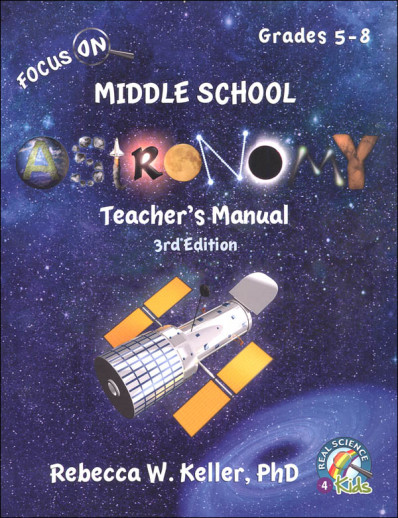We use cookies to make your experience better. To comply with the new e-Privacy directive, we need to ask for your consent to set the cookies. Learn more.
Focus On Middle School Astronomy Teacher's Manual (3rd Edition)
The Focus On Middle School Astronomy Teachers Manual, 3rd Edition accompanies the Focus On Middle School Astronomy Student Textbook and Laboratory Notebook, 3rd Edition. The Teachers Manual includes guides and instructions for the hands-on experiments in the Laboratory Notebook, objectives for each experiment, suggested questions to guide open inquiry, and complete materials lists for the experiments.
The Focus On Middle School Astronomy Teachers Manual, 3rd Edition contains 12 black and white chapters. Grades 5-8.
62 pages.
Twelve chapters covering early and modern astronomers, the changing views of the cosmos, technology in astronomy, earth in space, the moon, sun, eclipses, chemistry and physics of stars, planets, celestial clocks, star atlas, time, planetary position, planetary orbits, asteroids/meteorites/comets, stars, galaxies, the Milky Way, spiral galaxies, barred spiral galaxies, elliptical galaxies, exploding stars, super giant stars and super novae. Lab activities use commonly found items including a computer with internet access, modeling clay in several colors, flashlight etc. Contact us for full listing.


Teacher request